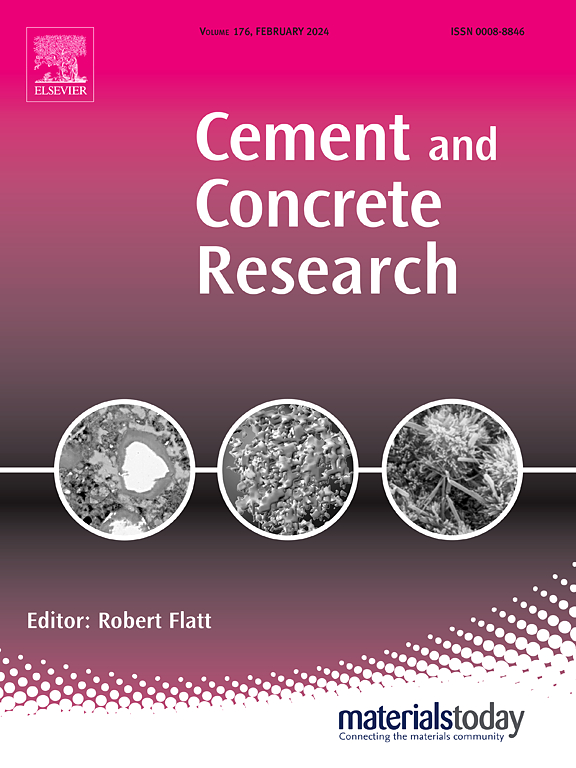Multi-physics modelling of 3D-printed concrete evolution in environmental conditions
IF 10.9
1区 工程技术
Q1 CONSTRUCTION & BUILDING TECHNOLOGY
引用次数: 0
Abstract
Extrusion-based 3D-printed cementitious structures have high water loss after printing provoking significant plastic shrinkage. In this study, we propose a thermo-poro-mechanical model of printed cementitious materials, driven by the experimental observation of a positive correlation between the printed wall thickness and compressive strength at the hardened state. The model is developed to represent evaporation at free surfaces, water consumption associated to the cement hydration and water flow within the material, accounting for their effect on temperature variations, strains and on the evolution of stiffness and compressive strength. Comparisons of compressive strength and plastic shrinkage with experiments are presented, demonstrating the validity of the proposed model. In the absence of protective measures, wall thickness is positively correlated with compressive strength and negatively correlated with shrinkage. When preventing evaporation by putting printed specimens in water, plastic shrinkage is significantly reduced and the compressive strength is increased, reaching similar values as cast samples.

环境条件下3d打印混凝土演变的多物理场建模
基于挤出的3d打印胶凝结构在打印后具有高失水率,引起显著的塑性收缩。在这项研究中,我们提出了打印胶凝材料的热孔力学模型,通过实验观察到打印壁厚与硬化状态下的抗压强度呈正相关。该模型用于表示自由表面的蒸发、与水泥水化相关的水消耗以及材料内部的水流,并考虑了它们对温度变化、应变以及刚度和抗压强度演变的影响。通过与试验结果的对比,验证了该模型的有效性。在没有保护措施的情况下,壁厚与抗压强度正相关,与收缩负相关。将打印试样置于水中防止蒸发,塑性收缩率明显降低,抗压强度提高,达到与铸样相近的数值。
本文章由计算机程序翻译,如有差异,请以英文原文为准。
求助全文
约1分钟内获得全文
求助全文
来源期刊

Cement and Concrete Research
工程技术-材料科学:综合
CiteScore
20.90
自引率
12.30%
发文量
318
审稿时长
53 days
期刊介绍:
Cement and Concrete Research is dedicated to publishing top-notch research on the materials science and engineering of cement, cement composites, mortars, concrete, and related materials incorporating cement or other mineral binders. The journal prioritizes reporting significant findings in research on the properties and performance of cementitious materials. It also covers novel experimental techniques, the latest analytical and modeling methods, examination and diagnosis of actual cement and concrete structures, and the exploration of potential improvements in materials.
 求助内容:
求助内容: 应助结果提醒方式:
应助结果提醒方式:


